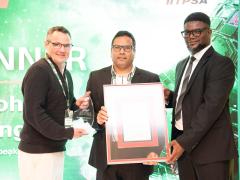The convergence of the digital and physical worlds, driven by spatial computing and the metaverse, is rapidly reshaping business landscapes. This transformation extends beyond the mere novelty of Virtual Reality (VR) headsets and Augmented Reality (AR) filters, signalling a fundamental shift in how organisations operate, collaborate, and innovate. Amritesh Anand, Vice President and MD, Technology Services Group at In2IT Technologies, discusses the interconnected worlds of business and tech.

The strategic question for businesses is no longer whether to embrace these technologies but how to effectively integrate them into their existing frameworks. Expert third-party IT companies are emerging as pivotal enablers in this integration process. They offer the specialised tools and expertise to convert spatial computing from a futuristic concept into a tangible business advantage.
Building the foundation: infrastructure and integration
Spatial computing, which can seamlessly blend digital content with physical environments, centres on a complex and interconnected ecosystem. This ecosystem relies heavily on sensors, Artificial Intelligence (AI), and real-time data processing. To establish this robust foundation, organisations often turn to IT providers. These providers specialise in deploying scalable cloud architectures, edge computing solutions, and interoperability frameworks. These elements are essential for businesses looking to integrate their systems with metaverse platforms, ensuring a smooth and efficient transition into the spatial computing era.
Crafting immersive experiences: enhancing engagement
The real value of spatial computing and the metaverse unfolds by creating shared, persistent digital spaces. These virtual environments facilitate novel and engaging interactions between users and brands. Specialised third-party developers play a key role in designing these immersive experiences. They focus on creating solutions that address real-world challenges and offer practical benefits to businesses and their customers.
Bridging distances: collaboration in the metaverse
Spatial computing can also bridge the collaboration gap that often challenges hybrid work models. Traditional video conferencing, while helpful, has limitations in replicating the nuances of in-person interactions. IT partners are developing 3D collaboration hubs within spatial environments to overcome these limitations. These hubs enable distributed teams to work together on 3D models, annotate designs in AR, and conduct virtual site inspections, fostering a more connected and productive remote work experience.
Securing the virtual frontier: cybersecurity in spatial environments
As businesses increase their presence and interactions within metaverse environments, robust security measures become paramount. The risks of data breaches, digital asset theft, and identity spoofing are ever-present. Specialised third-party cybersecurity companies are deploying advanced security solutions tailored to the unique challenges of virtual environments to mitigate these risks. These solutions often incorporate blockchain-based authentication and behavioural biometrics to safeguard virtual transactions.
Ensuring seamlessness: the imperative of interoperability
Interoperability across different platforms and systems is essential to fully realise the potential of the metaverse. A fragmented metaverse, where users struggle with incompatible platforms, limits the benefits for businesses and individuals. Forward-thinking IT partners advocate for open standards and unified systems that enable seamless integration and data exchange across various virtual worlds. This commitment to interoperability allows businesses to maintain brand consistency and provide a unified user experience, regardless of the specific platform or environment.
Empowering the workforce: training and skill development
The successful adoption of spatial computing depends on technology and the workforce's ability to utilise these tools effectively. To bridge this skills gap, third-party providers offer comprehensive training programmes to upskill employees in spatial computing technologies. These programmes often utilise AR-guided tutorials and VR simulations that replicate real-world scenarios, enabling employees to develop practical skills and confidence in using these technologies.
Local opportunities: spatial computing in South Africa
While global brands often dominate discussions about the metaverse, the South African market presents unique opportunities for leveraging spatial computing to address specific local challenges. South African enterprises are increasingly exploring the use of spatial technologies to overcome infrastructure limitations and reach underserved communities. These innovative applications highlight the potential for spatial computing to drive economic growth and social impact in the region.
Ultimately, the businesses that will thrive in this new era are those that strategically integrate spatial computing into their core operations. Third-party IT companies are essential partners in this process. They provide the expertise and support needed to translate abstract concepts into practical solutions that enhance efficiency, foster creativity, and build resilience. As the boundaries between the physical and digital worlds continue to blur, the question is not whether to invest in spatial computing but how quickly and effectively organisations can embrace these transformative technologies to gain a competitive edge.














